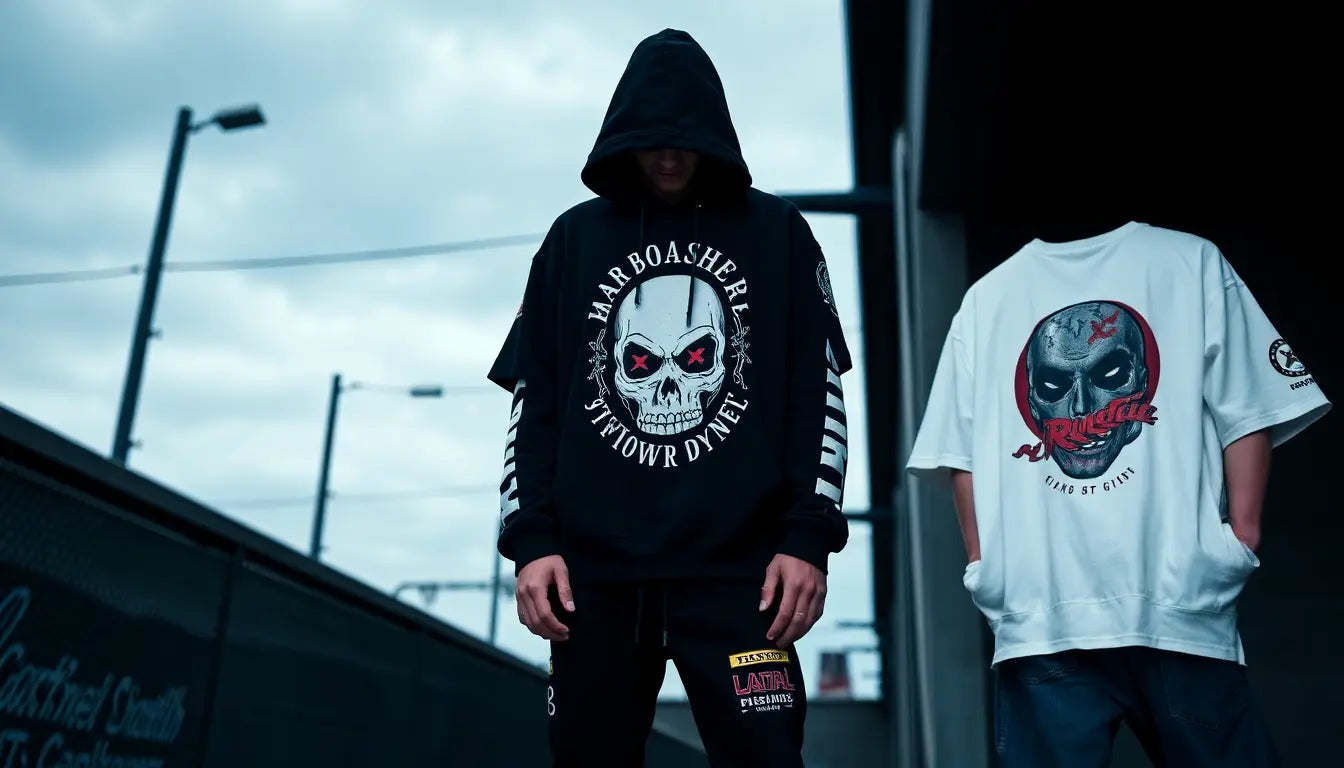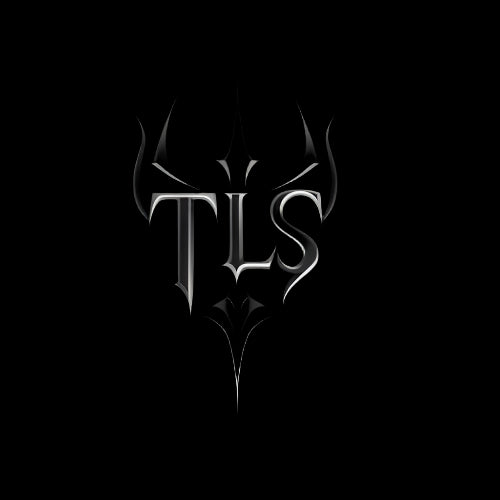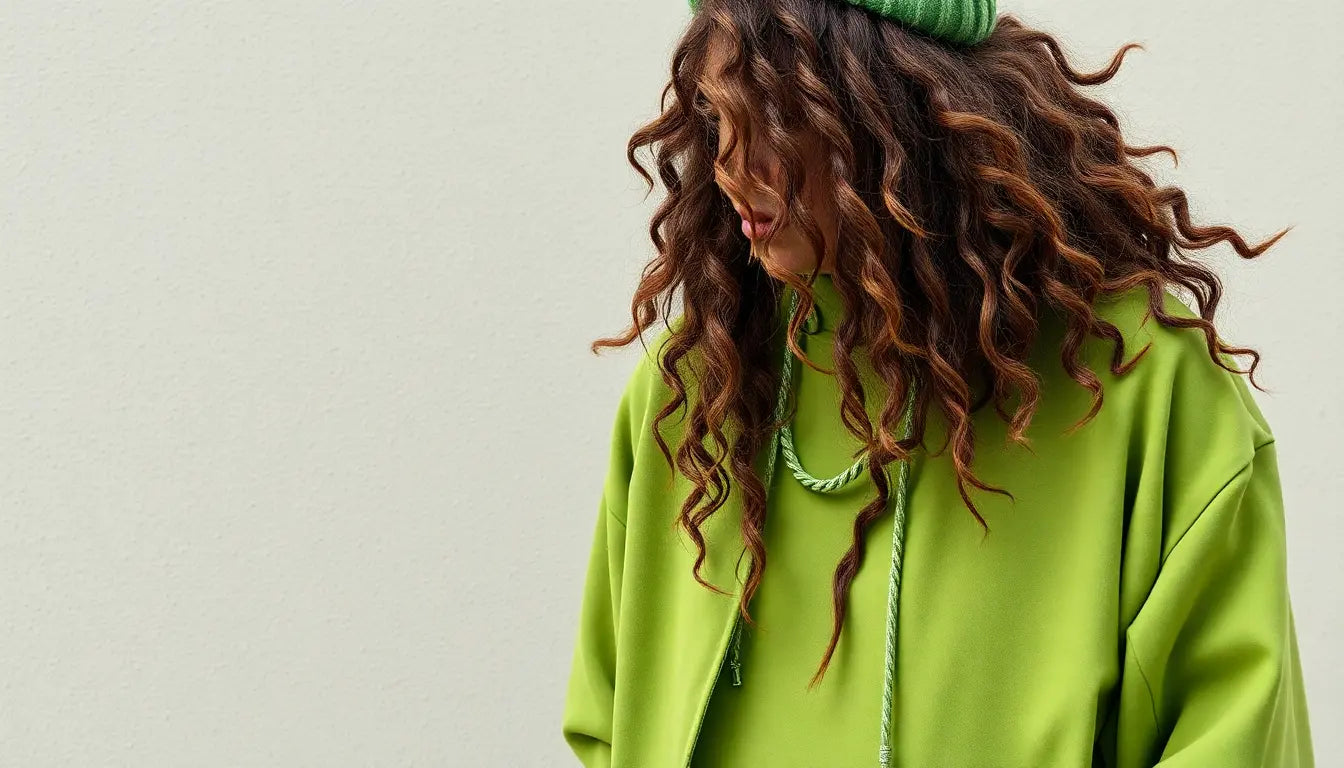
Why Tommy Lee Sparta's Merch Drops Are Turning Dancehall Fans into Streetwear Entrepreneurs
Introduction: how merch became a movement
Tommy Lee Sparta's merch drops in recent years have done more than sell clothing — they have reconfigured how dancehall fans interact with culture and commerce. What started as limited-run t-shirts, hoodies, and caps has evolved into a blueprint for micro-entrepreneurship: fans are reselling, co-creating, and building streetwear brands inspired by the artist's aesthetic. In 2025, this phenomenon is an important case study in cultural commerce, demonstrating how authenticity, scarcity, and community can create real economic opportunity.
Who is Tommy Lee Sparta and why his merch matters
Tommy Lee Sparta is a dancehall artist whose approach to image and storytelling intentionally blurs music, persona, and visual identity. His fanbase spans Jamaica and the global diaspora, and his aesthetic borrows from street, goth, and dancehall sensibilities. That strong visual language makes his branded items desirable as both signifiers of fandom and fashion statements — a key reason why drops generate buzz and catalyze entrepreneurial activity.
Dancehall, diaspora, and the streetwear opportunity
- Dancehall is global: Diaspora communities in the US, UK, Canada, and Europe amplify trends quickly and create cross-border demand.
- Cultural authenticity drives value: Fans prize pieces that feel rooted in the artist's story rather than generic fashion items.
- Streetwear cycles reward scarcity: Limited drops produce urgency and secondary-market value, making reselling profitable.
- Low-friction commerce tools exist: Platforms like Shopify, print-on-demand services, and social commerce integrations mean fans can start with minimal capital.
The anatomy of a successful merch drop
Understanding why Tommy Lee Sparta's drops work helps explain how fans turn fandom into business. Key components include:
- Narrative cohesion: Each piece tells a story linked to the artist's persona, lyrics, or visuals.
- High-visibility launch: Drops are announced across multiple channels at once, creating synchronized demand.
- Scarcity mechanics: Limited quantities, numbered editions, or exclusive colorways create collectibility.
- Community activation: Fans are invited to participate via livestreams, chats, and shared unboxing moments.
- Quality and detail: Thoughtful material choices and finishing can justify higher price points and secondary-market value.
Why fans become entrepreneurs: motivations and mechanics
There are practical and psychological drivers behind the fan-to-founder transformation.
- Monetizing expertise: Fans know what sells — colorways, graphics, and cut-and-sew details that resonate within the community.
- Access to demand: A drop creates immediate buyer interest; resellers and micro-brands capture that demand when items sell out.
- Social proof and identity: Carrying or selling a piece tied to a respected artist confers credibility that is transferable to adjacent product lines.
- Low-cost experimentation: Digital tools let fans test designs via pre-orders or limited runs before committing to inventory.
From fan to entrepreneur: a detailed roadmap
This step-by-step roadmap is designed for fans who want to transition from hobbyists into sustainable streetwear entrepreneurs.
- Stage 1 — Research and validation
- Follow drops closely for 3-6 months to identify patterns in sell-through, design language, and timing.
- Conduct simple market tests: social polls, small pre-order campaigns, or limited resell of authenticated pieces.
- Stage 2 — Minimal viable product (MVP)
- Start with a 10-50 unit capsule using print-on-demand or a local screenprinter to validate demand.
- Create tight product photography and short-form videos highlighting stylings and fit.
- Stage 3 — Brand and supply chain
- Define your visual and verbal identity; choose a name that respects existing IP and avoids confusion with the artist.
- Lock down suppliers for small-batch production and negotiate MOQs and lead times.
- Stage 4 — Growth and diversification
- Introduce higher-margin items, collaborate with local creatives, and expand sales channels (marketplaces, boutiques, pop-ups).
- Consider official licensing conversations if your brand grows into a recognizable partner opportunity.
Design, production, and supply chain playbook
Operational execution separates hobbyists from entrepreneurs. The following practical guidance covers design through fulfillment.
Design principles that sell
- Emphasize recognizability: stripes, special typefaces, motif icons, and distinctive placements make pieces memorable.
- Focus on fit and fabric: comfortable silhouettes and durable materials increase repeat purchases.
- Build a collection hierarchy: hero pieces for hype, staple basics for continuity, and accessories for margin expansion.
Production options and trade-offs
- Print-on-demand (POD): Low upfront cost, good for testing, but lower margins and limited control over materials.
- Local screenprinters and cut-and-sew shops: Better quality and faster iteration; useful for initial small runs.
- Overseas manufacturers: Lower unit cost at scale but require higher MOQs, longer lead times, and more complex logistics.
- White-label and private label: Good for accessories and basics when you want speed without building full manufacturing relationships.
How to source and vet suppliers
- Ask for samples and tech packs; confirm fabric content and wash tests.
- Request references and photos of past work, especially for similar streetwear brands.
- Calculate landed cost per unit including materials, production, duties, and freight before signing contracts.
- Negotiate clear payment terms, lead times, and quality inspection steps to protect against defects.
Pricing and margin models
Set prices based on costs, perceived value, and your target customer segment.
- Cost-plus: Calculate total cost per unit and add target margin (commonly 2.5x to 4x wholesale to arrive at retail).
- Perceived-value pricing: Higher price for limited editions can drive desirability and secondary-market premiums.
- Wholesale vs direct-to-consumer: DTC yields higher margins but requires investment in marketing; wholesale accelerates scale but lowers margins.
Branding and storytelling: tying products to culture
Storytelling is central. Fans buy the story behind the piece as much as the piece itself.
- Authenticity: Use community voices, local makers, and cultural references that are sincere and grounded.
- Transparency: Share production stories and sourcing to build trust and justify pricing.
- Visual consistency: Maintain a coherent feed, website, and packaging experience to signal professionalism.
Marketing, community growth, and channels that convert
Effective marketing blends content, community, and commerce.
- Short-form video: Reels and TikTok are essential for discoverability; prioritize lifestyle clips, styling ideas, and drop teasers.
- User-generated content: Incentivize customers to share unboxing, styling, and reviews with branded hashtags.
- Email and SMS: Use pre-launch lists to capture committed buyers and create urgency during drops.
- Marketplace and resale presence: Presence on resale platforms builds credibility and helps capture collectors.
- Local activation: Pop-ups, collabs with DJs, and community events turn online momentum into local loyalty.
SEO, keywords, and discoverability
Optimizing for search helps long-term discoverability beyond social trends. Focus on a combination of short and long-tail keywords. Examples to test and iterate:
- Tommy Lee Sparta merch
- dancehall streetwear
- limited edition dancehall apparel
- Jamaican streetwear brands
- dancehall inspired clothing
- limited edition tees drop
- streetwear drops 2025
Use these keywords in product titles, meta descriptions, blog posts, and Instagram captions where appropriate. Also cultivate backlinks via features in local fashion blogs, music press, and community publications.
Drop execution: pre-launch, launch, and post-launch checklist
- Pre-launch (2-6 weeks out)
- Create a launch timeline with content calendar and production milestones.
- Collect emails with incentives like early access or small discounts.
- Produce product photography, lifestyle shoots, and video teasers.
- Confirm inventory counts, packaging, and fulfillment partners.
- Launch day
- Open a single-time window for sales to concentrate demand or stagger releases by region/time zone.
- Activate paid social ads targeted to lookalike audiences and diaspora communities.
- Monitor website performance and prepare contingency for traffic spikes.
- Post-launch
- Ship promptly and share tracking updates to customers.
- Collect reviews and UGC; repost and thank top contributors.
- Analyze sell-through, acquisition costs, and customer feedback to inform next drop.
Legal, ethical, and financial considerations
Building a business from fan culture requires responsibility.
- Intellectual property: Avoid using the artist's name, likeness, or trademarked motifs without permission. Seek licensing or co-branding agreements if you want to use official assets.
- Disclosure and transparency: If items are inspired rather than official, state that clearly in product descriptions.
- Taxes and bookkeeping: Register your business as required, keep clear records, and set aside funds for taxes and fees.
- Consumer protection: Provide clear sizing, returns, and shipping policies to reduce disputes.
- Respect for culture: Collaborate with community creatives and give back where possible to avoid cultural extraction.
Business models that scale
There are multiple viable paths beyond one-off reselling.
- Pure resale: Low barrier to entry, but margins depend on secondary-market demand and authenticity assurance.
- Curated boutique: Mix official drops, inspired pieces, and complementary brands to build a lifestyle shop.
- Original brand: Build and sell your own capsules informed by dancehall aesthetics and community input.
- Licensed partner: If you scale, pursue official licensing deals with artists to access limited-run collaborations.
- Subscription or drop club: Offer members first access to limited drops and exclusive content.
Sample hypothetical case studies
These illustrative examples show realistic trajectories based on the strategies above.
- Case study A — The Reseller
- Started by buying limited Tommy Lee Sparta tees and reselling at 1.5x retail on niche marketplaces.
- Within 6 months, used profits to run a branded capsule of inspired beanies and hoodies produced locally.
- Transitioned to a curated shop that carries both resale and original pieces, achieving sustainable margins.
- Case study B — The Creator
- Built a small brand informed by dancehall motifs, using POD for tests and switching to small-batch manufacturing when sell-through justified it.
- Grew via collaborations with DJs and pop-up events in diaspora hubs, later opening wholesale accounts with boutiques.
Key metrics and how to measure them
- Sell-through rate: Percentage of inventory sold during a drop; target 60-90% for successful limited drops.
- Customer acquisition cost (CAC) vs lifetime value (LTV): Ensure LTV exceeds CAC for sustainable growth.
- Repeat purchase rate: Signals product-market fit and brand loyalty.
- Engagement metrics: Social comments, UGC rates, and email open rates indicate community health.
Common pitfalls and how to avoid them
- Overextending inventory: Start small and scale only when demand is validated.
- Neglecting quality: Poor materials erode trust and limit repeat purchases.
- IP missteps: Unauthorized use of artist IP can lead to takedowns, fines, and reputational damage.
- Ignoring customer service: Slow responses and shipping delays kill hype and long-term goodwill.
Practical templates and tools to get started
- Pre-order landing page: Simple single-product page with email capture and expected ship date.
- Basic tech pack checklist: garment specs, measurements, fabric composition, print placements, colors (Pantone), and label details.
- Launch week social calendar: teaser, countdown, product reveal, live Q&A, launch announcement, restock notice.
- Budget starter guide: estimated $500-2,500 to test a small capsule using POD or local screenprinting (varies by location and quality).
Conclusion: the future of cultural commerce
Tommy Lee Sparta's merch drops are a clear example of how music-driven aesthetics can catalyze entrepreneurial energy. For dancehall fans in 2025, the playbook is accessible: observe the culture, validate demand, start lean, and scale with respect for the artist and community. Whether you begin as a reseller, curator, or original brand maker, the keys are authenticity, operational discipline, and community-first marketing. The intersection of dancehall and streetwear is creating not only fashion moments but sustainable small businesses that amplify culture and generate real economic value.
Next steps: a quick action checklist for aspiring entrepreneurs
- Follow three recent drops and document what sold and why.
- Create a simple tech pack for one product idea and solicit quotes from two suppliers.
- Build a 500-person email list via social campaigns to test demand with a pre-order.
- Set aside a small launch budget and commit to a 90-day experiment cycle with clear metrics.
With thoughtful execution and cultural sensitivity, fans can turn the excitement around Tommy Lee Sparta's merch into legitimate streetwear businesses that celebrate dancehall while creating livelihoods.


